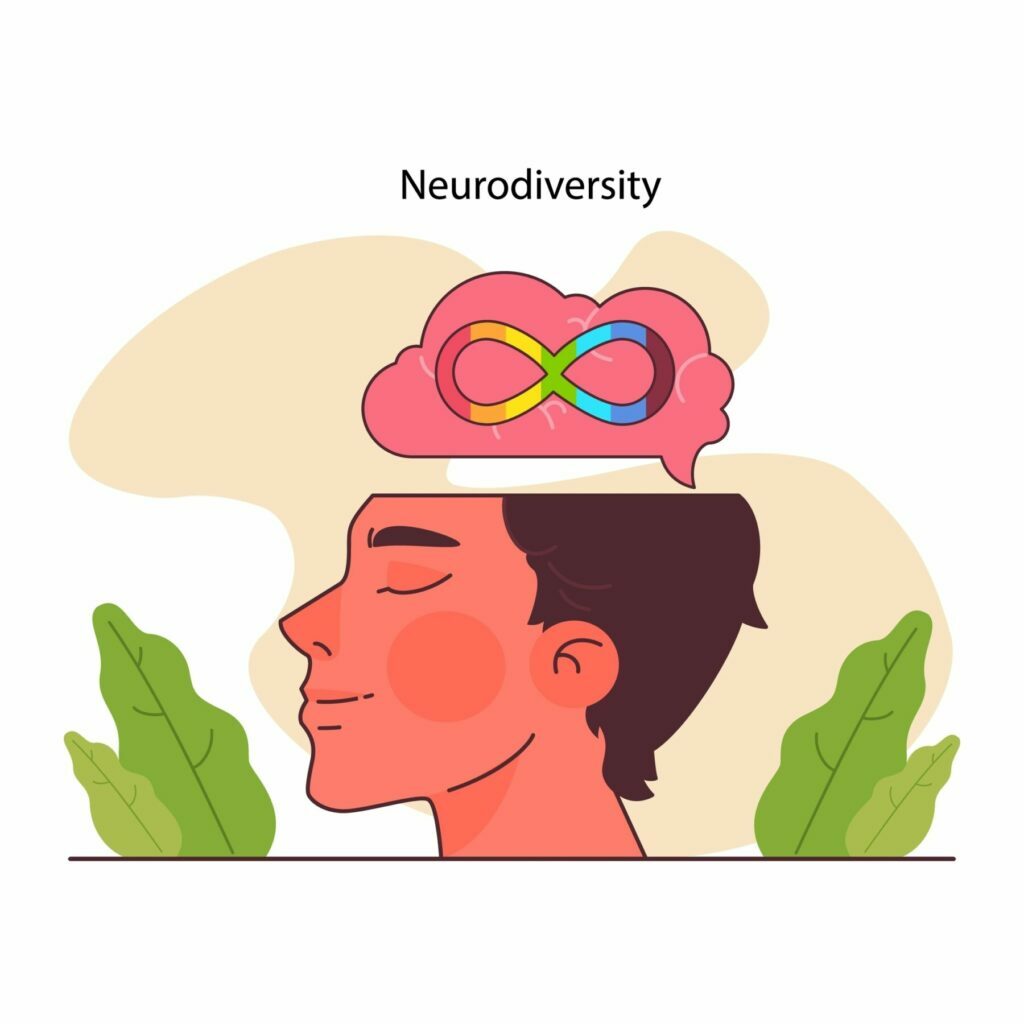Strategies for Managing Social Anxiety in the LGBTQ+ Community

Social anxiety disorder (SAD) can significantly impair an individual’s ability to function in daily life. While it affects a broad range of people, queer people often face unique challenges that can exacerbate their experiences of social anxiety. But, why? Let’s explore.
Social Anxiety Disorder
Social anxiety disorder (SAD) is a persistent and overwhelming fear of social situations. It is a condition characterized by intense anxiety or fear of being judged, negatively evaluated, or rejected in a social or performance situation. People with social anxiety often feel inadequate, inferior, and excessively embarrassed. This fear can significantly interfere with daily routines, occupational performance, or social life.
Differentiating Social Anxiety Disorder from Normal Anxiety
While it’s natural to feel nervous in some social situations—such as giving a speech or going on a first date—social anxiety disorder is more intense, enduring, and pervasive. It is helpful to normalize the experience of fear, recognizing that some level of fear is a natural and even beneficial human response. However, when this fear becomes debilitating, preventing one from engaging in normal activities, it crosses into the realm of a clinical issue that might require treatment.
The Prevalence of SAD in Queer and LGBTQ People
Queer people can also experience SAD due to a combination of genetic and environmental factors, similar to their cisgender and heterosexual counterparts. The likelihood of developing SAD increases with factors such as hereditary predisposition, upbringing, or early negative experiences, suggesting that anxiety disorders, including SAD, do not discriminate by sexual orientation or gender identity. However, social anxiety disorder (SAD) is significantly more prevalent among queer people than in the general population.
Why is LGBTQ Social Anxiety Disorder Prevalent?
This heightened vulnerability is not just a statistical observation but a reflection of the complex interplay of societal, psychological, and biological factors that impact this community uniquely.
A comprehensive study conducted by Mahon, Gallagher, and Kiernan (2018) highlights that LGBTQ social anxiety levels are notably high across all sexual minority subgroups. This research underscores a troubling trend, with certain demographics, such as bisexual, queer, pansexual, asexual, and non-cisgender individuals, experiencing particularly acute levels of social anxiety.
Further, gay men are nearly twice as likely to suffer from an anxiety disorder as their heterosexual counterparts, a situation exacerbated by both overt and covert forms of homophobia—from direct discrimination to subtle microaggressions—woven into their daily experiences.
- The Role of Environmental Non-Acceptance
Growing up in an environment that is overtly non-accepting or subtly unwelcoming can lead LGBTQIA+ individuals to internalize negative perceptions about their worth and identity. This internalization often manifests as minority stress, a condition marked by:
- Bullying – Repeated hostile actions aimed at devaluing one’s identity can leave deep psychological scars, contributing to LGBTQ social anxiety.
- Societal Standards – Living in a predominantly heteronormative society that frequently exhibits homophobic and transphobic attitudes significantly increases the risk of depression and anxiety, conditions that often co-occur with social anxiety.
- Anticipatory Anxiety – The fear of potential harassment or discrimination, even before it occurs, can be paralyzing and perpetuates a cycle of anxiety. Am I welcome here? Can I show my true self? These questions naturally evoke social anxiety.
- Discrimination – Discriminatory practices in social, familial, educational, and occupational environments not only impede personal and professional development but also contribute significantly to long-term anxiety disorders.
- Minority Stress and Its Implications
Minority stress is particularly prevalent among stigmatized groups like LGBTQ people, driven by an ongoing lack of social support and lower socioeconomic status. The dread of insufficient support upon coming out often leads individuals to suppress significant aspects of their identity, exacerbating feelings of isolation and anxiety. This stress is especially pronounced in social interactions where queer and trans individuals may face misgendering or incorrect assumptions about their identity, leading to a constant state of alertness and anxiety.
- The Anxiety of Coming Out
The act of coming out can be a source of significant stress, particularly when anticipating or experiencing rejection from family, friends, or society. This pivotal moment can either be a step towards self-acceptance or a trigger for deep LGBTQ social anxiety, depending on the reactions of those involved.
- Specific Challenges for QTBIPOC
For Queer, Trans, Black, Indigenous, and People of Color (QTBIPOC), social anxiety is often compounded by racism, transphobia, and queerphobia. These individuals must navigate a complex landscape where spaces that should be safe can still feel hostile or exclusionary, leading to heightened vigilance and anxiety in social settings.
- Biological and Environmental Contributions
Genetic predispositions and environmental factors also play crucial roles in the development of social anxiety disorder across all populations, including LGBTQ people. Exposure to prolonged stress or trauma, especially related to one’s identity, can trigger or exacerbate this condition.
- The Impact of Stigma
Experiencing ongoing negativity and stigma from the outside world can lead individuals to believe they are fundamentally unlovable or unwelcome, a belief that can have lasting adverse effects on mental health.
Ultimately, the prevalence of social anxiety disorder among LGBTQ people can be attributed to a need to constantly monitor one’s behavior in social situations – often a result of navigating multiple layers of marginalization and mental health challenges. Moreover, societal exclusion and invalidation foster a necessity for hypervigilance about potential threats, further embedding anxiety within the daily lives of those affected.
Importance of Treating Social Anxiety Disorder
If left untreated, social anxiety disorder can severely restrict one’s ability to engage in meaningful social interactions, which are crucial for forming personal relationships, advancing in one’s career, or pursuing educational opportunities. Untreated social anxiety can also increase the risk of developing other mental health disorders, such as depression. Social anxiety disorder doesn’t have to control you!
How to Address Social Anxiety Disorder
- Normalizing Anxiety and Start Small – Understanding that anxiety is a common experience can alleviate some of the stigma associated with it. Taking small steps, such as attending less intimidating social events, can help build confidence overtime.
- Preparatory Strategies – Before entering a social situation, planning ahead can reduce anxiety. This might involve rehearsing conversations, setting personal boundaries, or ensuring the presence of a supportive friend or family member.
- Mindfulness and Sensory Grounding Techniques – Practicing mindfulness and grounding techniques can help manage anxiety in the moment. These practices focus on bringing attention to the present and engaging the senses, which can help divert attention away from anxiety-provoking thoughts.
- Use Your Support Network – Leaning on friends, family, or support groups for encouragement and understanding can provide a safety net that reduces anxiety. Open communication about one’s feelings and challenges helps build a community of support.
- Self-Care and Decompression – Taking time to relax and engage in self-care after social interactions is crucial. Recognizing and honoring one’s limits can prevent burnout and promote emotional recovery.
Fortunately, SAD is Treatable!
Therapeutic Interventions
Various therapeutic approaches, such as cognitive-behavioral therapy (CBT), Interpersonal Therapy, and many others, are effective in treating social anxiety disorder. In some cases, medications such as antidepressants or anti-anxiety drugs can be prescribed to help alleviate the symptoms of social anxiety disorder, making it easier for individuals to engage in therapy and other treatments.
Social anxiety disorder is a challenging condition that can severely impact one’s quality of life, but it is also a treatable disorder. For LGBTQ and queer people, understanding the unique triggers and stressors that contribute to LGBTQ social anxiety is crucial. With the right support and treatment strategies, you can overcome the debilitating effects of social anxiety and lead the life you want.
This blog is made for informational and educational purposes only. It is not medical advice. The information in this blog is not intended to (1) replace a one-on-one relationship with a qualified licensed health care provider, (2) create or establish a provider-patient relationship, or (3) create a duty for us to follow up with you.



